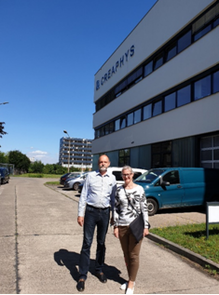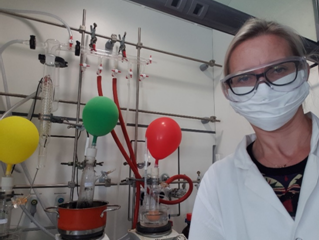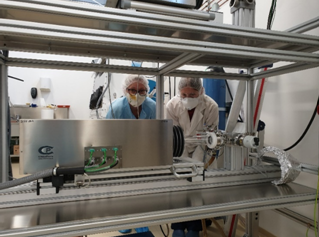Nearing the end of her secondment, Lithuanian researcher Dr. Aušra Tomkevičienė can reflect on a rich and rewarding 12 months spent at CreaPhys in Dresden.
Dr. Tomkevičienė is a Senior Researcher in the Department of Polymer Chemistry and Technology at Kaunas University of Technology with over 48 journal publications about the synthesis, properties and applications of organic semiconductors. This expertise makes her ideally suited to lead Work Package 2 “Synthesis” in the MEGA project.
Dr. Tomkevičienė is a Senior Researcher in the Department of Polymer Chemistry and Technology at Kaunas University of Technology with over 48 journal publications about the synthesis, properties and applications of organic semiconductors. This expertise makes her ideally suited to lead Work Package 2 “Synthesis” in the MEGA project.
Dr. Tomkevičienė’s secondment at CreaPhys began in July 2019. The company is specialised in the production of high-quality material purification systems for the sublimation of organic molecular compounds. Such equipment is vital for purifying the organic molecules created in the MEGA project.
Thanks to the secondment, Dr. Tomkevičienė has gained experience and training in the synthesis and purification of boron complexes using CreaPhys’ vacuum sublimation system.
Thanks to the secondment, Dr. Tomkevičienė has gained experience and training in the synthesis and purification of boron complexes using CreaPhys’ vacuum sublimation system.
Specifically, Dr. Tomkevičienė designed, synthesised, purified and characterised new types of thermally activated delayed fluorescence (TADF) emitters, namely:
- A series of phenol-pyridinyl boron complexes bearing triphenylamine containing group on boron centre.
- A new class of four-coordinate donor-acceptor boron-containing compounds bearing a tridentate 2,2’-(pyridine-2,6-diyl)diphenolate (dppy) ligand.
Using CreaPhys’ column chromatography and vacuum sublimation systems, Dr. Tomkevičienė was able to purify the synthesized derivatives. Afterwards, she examined the structures of the synthesized compounds using nuclear magnetic resonance (NMR) and infrared spectroscopy as well as mass spectrometry methods.
Away from her research work, the secondment also gave Dr. Tomkevičienė the fantastic opportunity to improve her German language skills, explore Dresden, and go walking in the surrounding countryside in the state of Saxony. She is finishing her secondment with fond memories of her stay.




